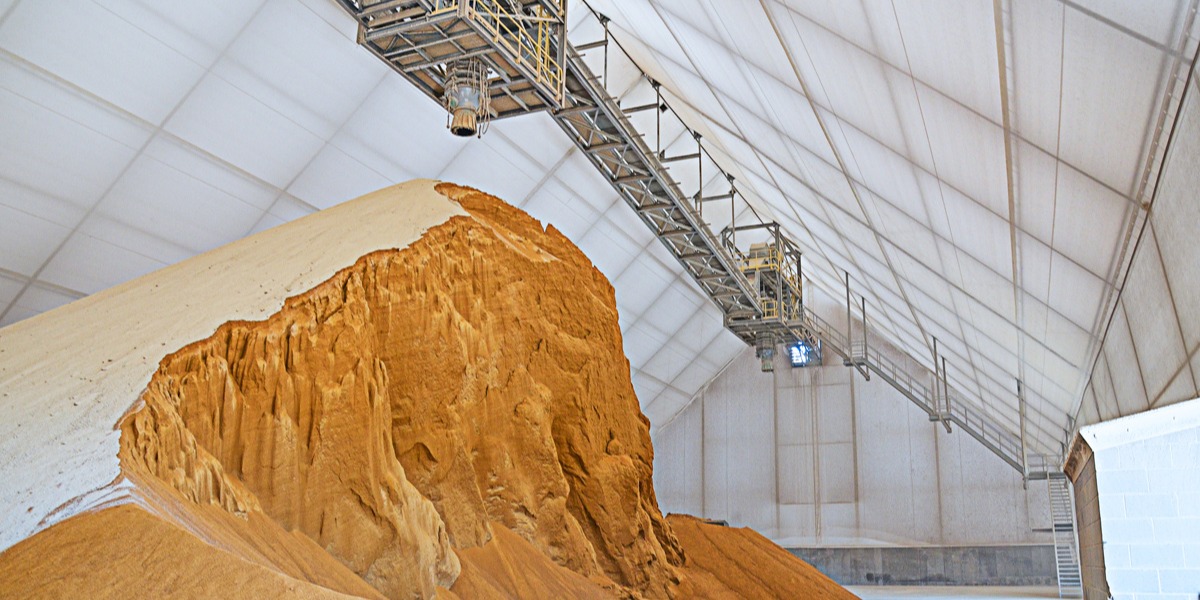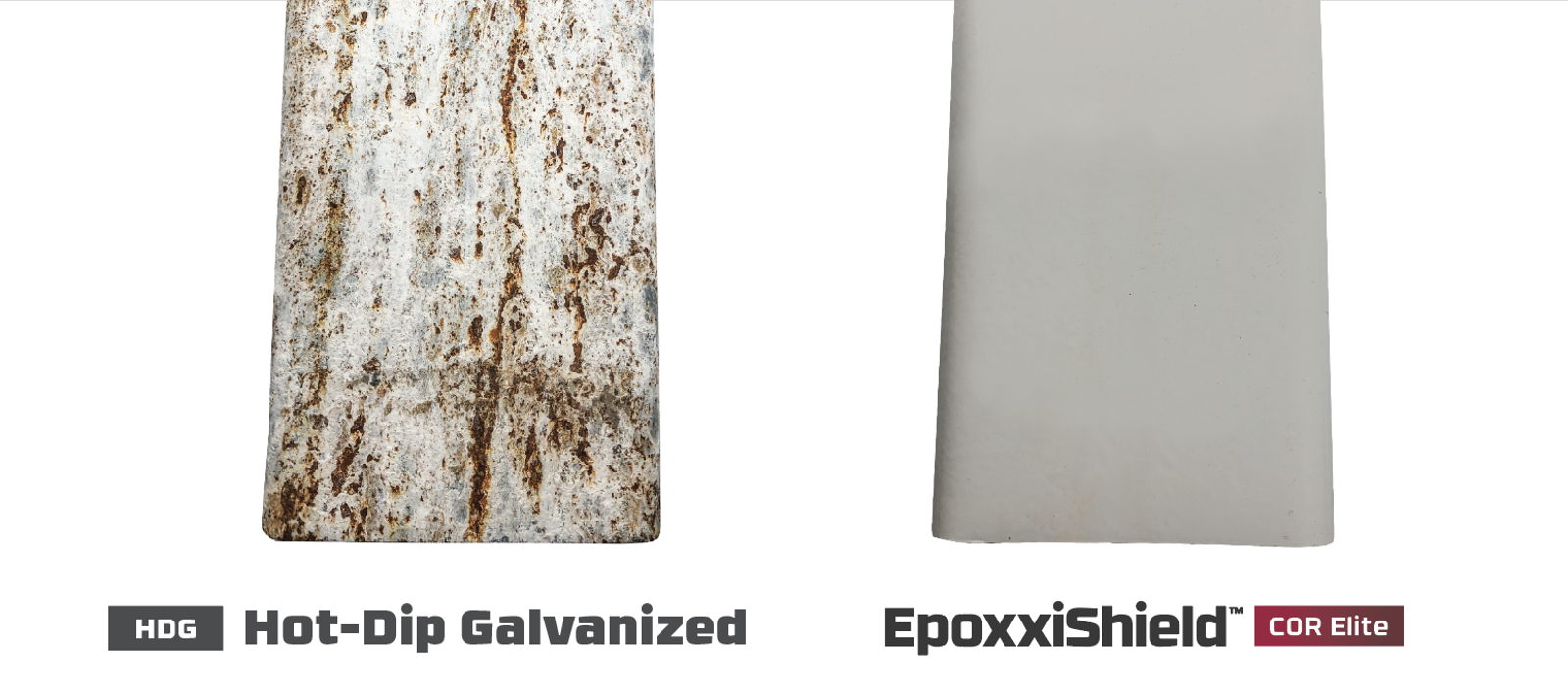Corrosion Protection for Bulk Storage

Bulk commodity buildings have a lot of assets to protect: their employees, their equipment, and of course their product. Typically, product like fertilizer or salt has an abrasive quality that can wear away a building faster by expediting corrosion. Legacy Building Solutions has worked over the years to develop solutions to aid in extending the life of your bulk commodity storage facility.
What is Corrosion?
Corrosion is the deterioration of metal caused by a reaction with the environment. This makes for an expensive problem— billions of dollars, in fact—to repair damage done by corrosion. Most often, the damage is too far gone, and the affected piece needs to be replaced.
The environment that is prone to this affliction are places like bulk storage buildings that are storing corrosive materials or locations near the coastlines. Fertilizer and salt have very reactive elements that can expedite the corrosion process, potentially creating a more expensive building over time. Check out this case study that covers corrosion protection for a salt storage building more in depth! We at Legacy Building Solutions have worked with numerous companies that require the best corrosion protection there is, and our team has engineered a product that can contend for the crown.
Fabric vs. Corrosion
First and foremost, it is important to know that fabric is impervious to corrosion. The membrane that covers your building cannot wear away due to corrosion, even in highly corrosive environments. Whether you are storing fertilizer or located right on the coast of Florida, fabric is unaffected by corrosive elements. This means that a fabric structure has an advantage over pre-engineered buildings clad in steel or other metals.
Typically, our roof and sidewalls are comprised of our ExxoTec™ fabric and tensioned with our patented attachment system. With a metal building, the steel panels need to be screwed in place, which substantially increases the risk for water leakage, air leakage, and expedited corrosion. Fabric is heat-welded, creating a seamless panel, virtually eliminating leakage and increasing the lifespan of your building.

EpoxxiShield™
Legacy Building Solutions specializes in rigid I beam steel frame fabric structures, and we take pride in our engineering and innovative approach to fabricating a building that outperforms for our customers. Since the very beginning, Legacy was built on the desire to do something better, greater, more efficient. That is what our CEO Ben Fox’s vision started out as, and now his dream is reality. First, it was about building a better tension fabric structure. Now, it is about all the ways we can best protect these buildings. An older method of corrosion protection is hot-dip galvanizing (HDG) or inline galvanizing. Across the industry, this was common practice and is still used today.
However, our bulk storage buildings are offered an added level of corrosion protection over HDG. EpoxxiShield™ is an epoxy coating that is applied to the structure, creating a barrier of corrosion protection. Legacy tested two pieces of steel; one with the HDG and one with EpoxxiShield™. Through testing, we discovered the corrosion went deeper into the HDG protected steel, whereas the steel with EpoxxiShield™ outperformed with no visible damage. EpoxxiShield™ will keep your building frames better protected and easier to repair. You can read up on HDG vs. epoxy coating more in another blog post here.

Commodity Bulk Storage
The bulk storage industry has been a part of the tension fabric legacy for years as it is a very practical way to shelter bulk commodities. These assets are typically of an abrasive nature, such as fertilizer or salt. The chemical composition of fertilizer and salt increases the risk of corrosion.
Then we consider the nature of a storage facility. For it to function, the operation often requires equipment like conveyors, mixing towers, etc. When working with fertilizer, salt, or sand, it can create a lot of dust. These particles can get into every nook and crevice, wreaking all kinds of havoc on your building’s frame and secondary structural framing. With epoxy coatings like our EpoxxiShield™ that vital protection extends the life of your building and building ROI.
Mining sites are a closely related cousin to bulk storage. There are certain factors such as minerals present in these types of working environments, some of which react badly with galvanized metal. This puts HDG out of the question, making EpoxxiShield™ even more attractive.
As previously stated, coastal environments can also decrease the lifespan of your building. The salt in the air has shown detrimental effects to nearby buildings. Extreme winds can carry that malevolent force straight to your door; make sure to keep it at bay with some trustworthy corrosion protection.
Legacy’s Solution
Have the peace of mind that fabric can offer you; your building’s life is extended just by being clad in fabric. Corrosion damage is eliminated due to the nature of fabric, and the lack of screw hole penetrations decrease the risk of water/air leakage. The steel parts that are present in a Legacy building can be protected with EpoxxiShield™, a coating that provides a strong, deep protection against corrosion. Tension fabric structures are what we do and innovative thinking is who we are.
Subscribe to our Blog
Recent Posts
- 5 Factors Every Project Owner Should Consider Before Approving Building Materials
- The 20-Year View: How Material Choices Impact Long-Term Operational Costs
- Climate Resilience in Commercial Construction: Why Traditional Methods May Not Be Enough
- Speed and Quality: The Role of Hybrid Building Materials
- Beyond the Bleachers: Designing Visually Striking Sports Facilities

